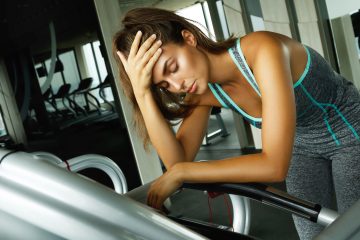Medications and Endurance Training: What You Should Know
Recently, a drug rep was in our clinic telling me how their pain medications would be good for the pains commonly experienced by athletes. I immediately thought about the importance of this topic and figured I better share some words on the blog about it. Not all primary care docs, nurse practitioners, and PA’s are familiar with the unique physiology of endurance athletes. It is important to take this into consideration when considering taking certain medications.
For this post, I am only going to cover common pain medications (both OTC and prescription) and antibiotics.
Over-the-Counter Pain Relievers
In a study conducted in 2007, runners took either aspirin (650mg), ibuprofen (400mg), or a placebo 24 hours prior to running 60 minutes on a treadmill at 70% VO2max. Researchers found that both ibuprofen and aspirin increase gastric permeability. Aspirin also increases small intestine permeability. In laymen’s terms, this means you are not absorbing nutrients as well, or you have a mild “leaky gut”. Some of the carbohydrates you take in during your race/training will not be absorbed.
Increased gastric and intestinal permeability can lead to gastrointestinal (GI) discomfort. There is also evidence that NSAID use during intense exercise can increase GI bleeding, which is somewhat common in triathletes who incorporate a significant amount of intensity to their training. Increasing blood loss through the GI system often leads to a decrease in hemoglobin and red blood cells, and is a common cause of anemia in triathletes.
For general health, it is best to avoid these prior to prolonged exercise. However, I must avoid bias here and share the entire story. There is research suggesting that acetaminophen can aid performance. As pain perception increases our speed decreases. Research exists that shows that in short events, such as a short cycling time trial, reducing the pain by taking an OTC pain reliever may result in cyclists riding faster due to the lack of pain. However, in long events, NSAIDs, aspirin, and acetaminophen have generally been shown to be unsafe and have little to no positive effect on performance.
A study performed on Ironman distance triathletes several years ago found an increased risk of exertional hyponatremia due to altered kidney function when taking NSAIDs. NSAIDs increase the effect of anti-diuretic hormone, causing the kidneys to retain water and thus diluting sodium levels. Similar findings have been found in newer studies. This complication is especially concerning if it is hot and humid on race day.
OTC Pain Reliever Summary
Although acetaminophen use may be very slightly beneficial to performance in very short events, OTC pain relievers are generally not a good idea. Acetaminophen in high doses can cause liver damage. It is unlikely that an athlete would take the sort of dose to cause acute liver damage (approximate dose in adult is 8,000 mg in 24 hour period in “normal adult”). However, in long distance training and racing, the liver is typically burdened. In fact, in nearly every professional endurance athlete I perform blood tests on I am seeing high liver function numbers, meaning the liver is “stressed”. Although this topic has not been studied much, we do know that a risk factor for liver damaging side effects from acetaminophen is a history of liver conditions. The stress your liver endures in a long distance event may be enough to be considered a predisposition for acetaminophen toxicity. I can’t say this with conviction, as I have not seen any research on it, but it sure makes sense and is not something I would personally risk.
For long distance triathletes, NSAIDs can be detrimental to performance, and even be dangerous. You are better off avoiding them. Although, if there is simply no other option and/or you are one of those people whose opinion is “I’ve been doing this for years and I haven’t had a problem yet, so no matter what you say I’m still taking my OTC meds”, acetaminophen is likely the safest. The fear of hyponatremia (abnormally low sodium concentration in blood) is a very real risk, and a big enough risk for many experts, myself included, to consider NSAID use for ultra-distance events (ex. Ironman) an absolute “no-no”. Hyponatremia can result in brain swelling, brain herniation, cardiopulmonary arrest, seizures, coma, and even death in severe cases. Think this can’t happen to you? You better think again. Researchers found that 13% of 2002 Boston Marathon finishers were clinically hyponatremic. Yep, that is after a marathon…and not one that came after swimming 2.4 miles and biking 112.
Prescription Pain Relievers
Muscle Relaxants – Muscle relaxants should be discontinued a couple days before competition and should never be taken just prior to competition or training. Ideally, an endurance athlete would not take them at all. However, these are very commonly prescribed and some endurance athletes find them helpful for injuries not sustained from running, biking, or swimming. The biggest danger with muscle relaxants is the side effects. They are CNS depressants and common side effects include drowsiness and dizziness. Regarding performance, it would be awfully tough to have a good race when you feel drowsy. Regarding safety, drowsiness and dizziness can be an issue when you are competing in a race where common side effects of the race itself are dizziness and lightheadedness. Falls are a concern.
Vicodin – Vicodin is a combination of acetaminophen and hydrocodone. Vicodin is indicated for moderate to severe pain. Put simply, Vicodin is not for the training athlete, except in VERY special circumstances and under VERY careful guidance. If you think you may be one of those VERY special circumstances, be sure to speak with a doctor familiar with the physiological demands of training for whatever event you are training for.
Percocet – Percocet is a combination of acetaminophen and oxycodone. Similar to Vicodin and my opinions are the same. See Vicodin for more information.
Celebrex – Celebrex is a strong NSAID. Bottom line, don’t use it if you are an endurance athlete. There are better alternatives if absolutely needed.
Solutions for Pain
If the pain is localized, be sure to consider a topical cream based pain reliever. Topical pain relievers provide adequate pain relief for many of the conditions experienced by endurance athletes, such as tendinopathy’s and minor sprains/strains. Topicals can also be compounded to include both pain relievers and anti-inflammatory medications. By using topical creams you are bypassing the GI system, and less medication is absorbed into the bloodstream to be filtered through the liver. Topical cream based pain relievers are my choice for localized pain relief when needed.
Antibiotics
There are times when antibiotics are needed. As an athlete, nothing is more frustrating than being ill. Not only do you feel terrible, but you are also missing out on valuable training time. However, before your impatience leads to a hasty decision to take antibiotics, make sure the illness is truly bacterial. Why? Because antibiotics come with a price on functional health.
There are many studies that show the negative effects of antibiotics on the vital microflora (probiotics) in our guts. A recent study shows that following a single short course of ciprofloxacin certain strains of probiotics are still not recovered 6 months following the treatment! Yikes. The microflora in your gut appears to have a connection with micronutrient absorption. Certain micronutrients are essential to red blood cell production, cellular functions, and certain critical components of recovery following workouts.
There appears to be evidence in favor of taking probiotics following the completion of antibiotics. However, probiotics are much more complicated than simply going to your local grocery store and buying a bottle that reads “Probiotic”. There are many strains of probiotics, and research has yet to determine how to best supplement them. How probiotics are prepared, bottled, their source, etc, etc all make a difference in their viability. Choosing a quality company is important. If you are looking for a quality probiotic, send me an e-mail at garretrock1 at gmail dot com (yes, I don’t want spam so I spelled my e-mail address out on purpose…beware of those internet robots).
Happy training!
Resources
Lambert GP, Boylan M, Laventure JP, Bull A, Lanspa S. Effect of aspirin and ibuprofen on GI permeability during exercise. Int J Sports Med 2007 Sep; 28(9); 722-6.
Piatkowski TS, Day WW, Weiner M. Increased renal drug metabolism in treadmill-exercised Fischer-344 male rats. 1993 May-Jun; 21(3): 474-9.
Mauger AR, Jones AM, Williams CA. Influence of acetaminophen on performance during time trial cycling. J Appl Physiol. 2010 Jan;108(1):98-104.
Rudzki SJ, Hazard H, Collinson D. Gastrointestinal blood loss in triathletes: it’s etiology and relationship to sports anaemia. Aust J Sci Med Sport. 1995 Mar;27(1):3-8.
Wharam PC, Speedy DB, Noakes TD, Thompson JM, Reid SA, Holtzhausen LM. NSAID use increases the risk of developing hyponatremia during an Ironman triathlon. Medicine and Science Sports and Exercise. 2006 Apr; 38(4): 618-22.



0 Comments